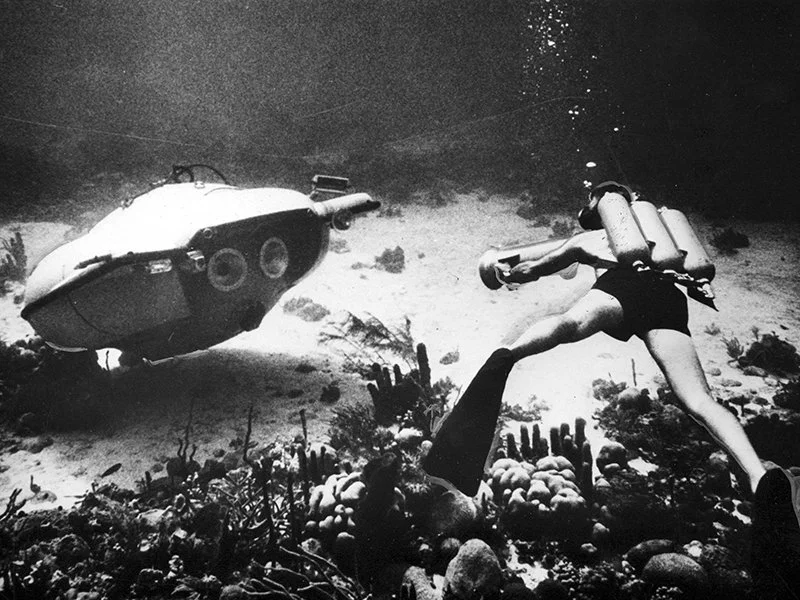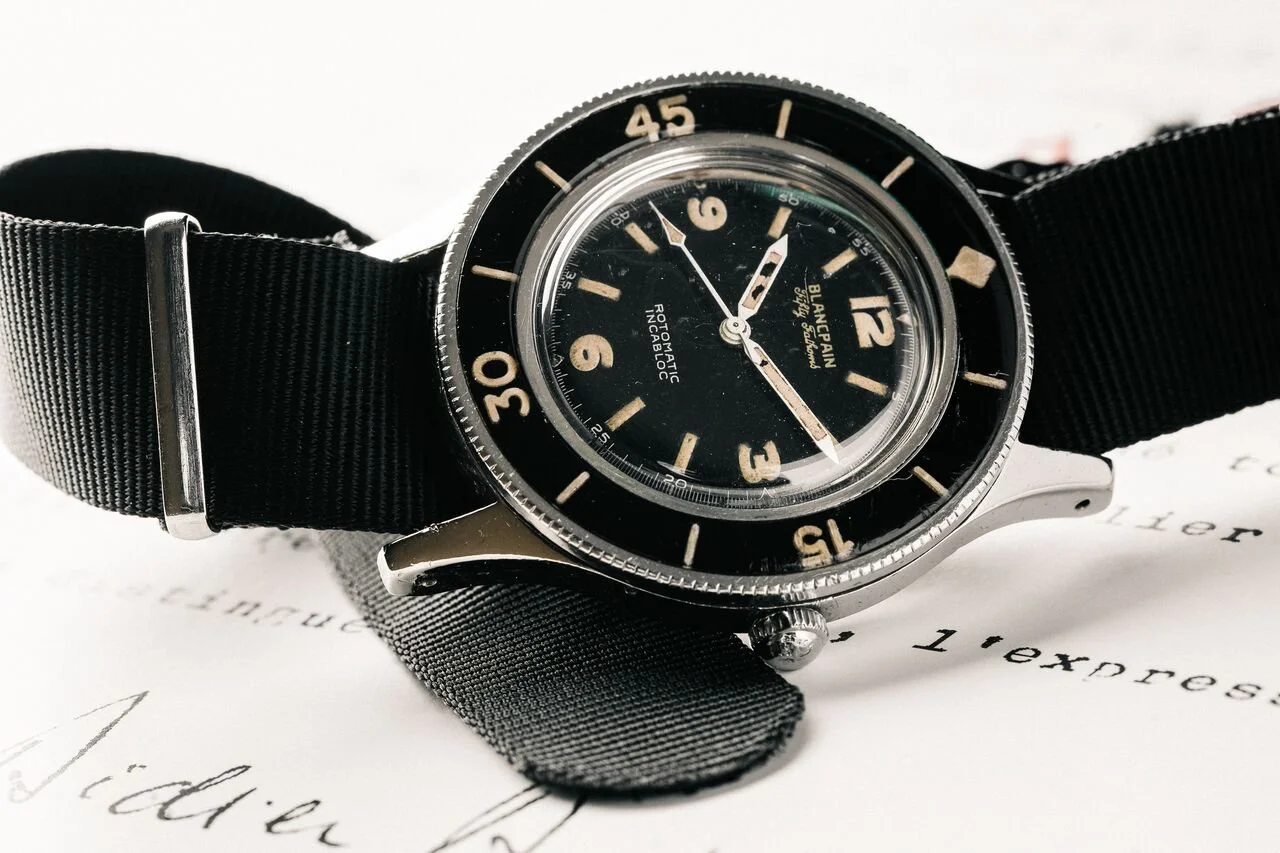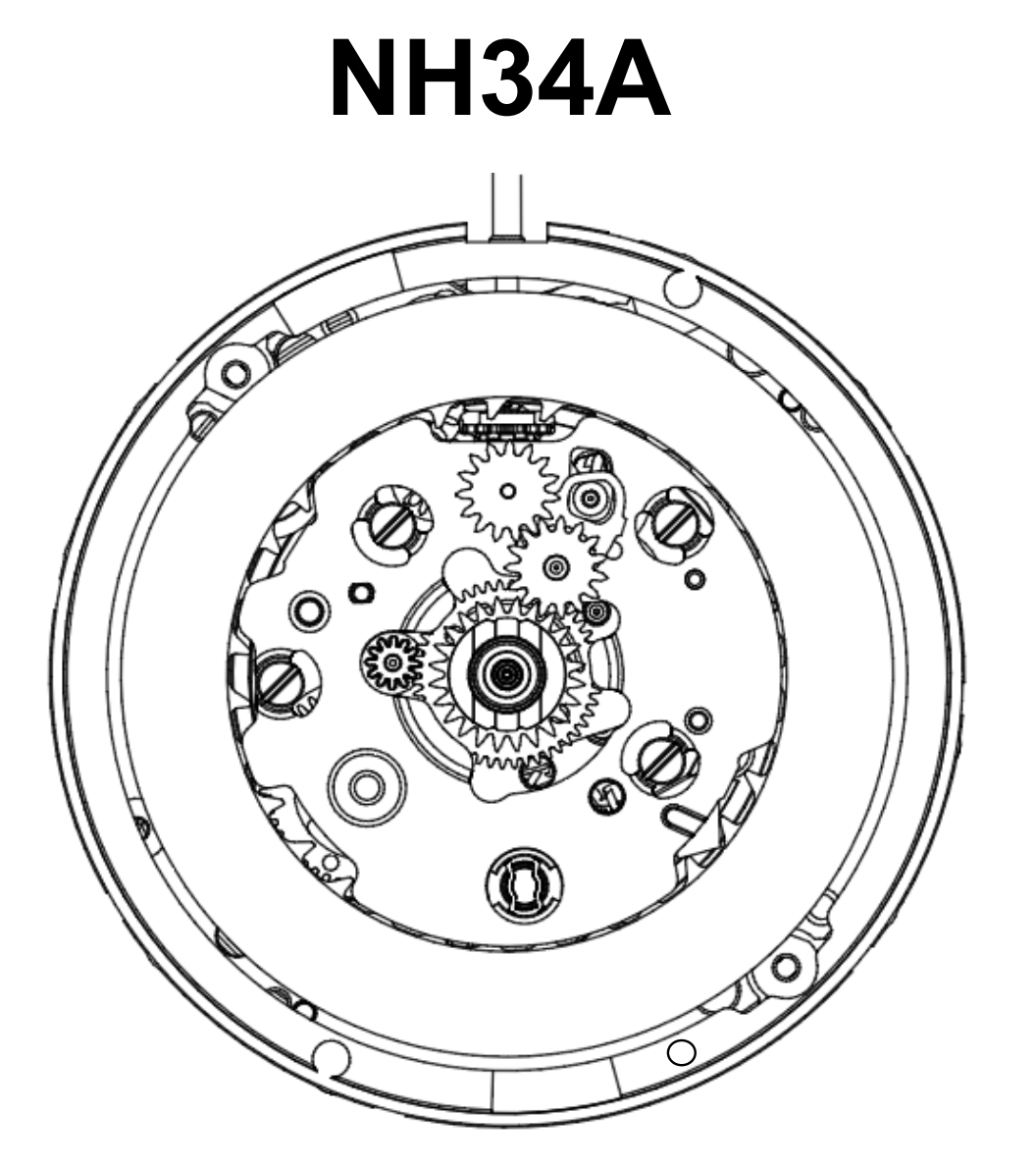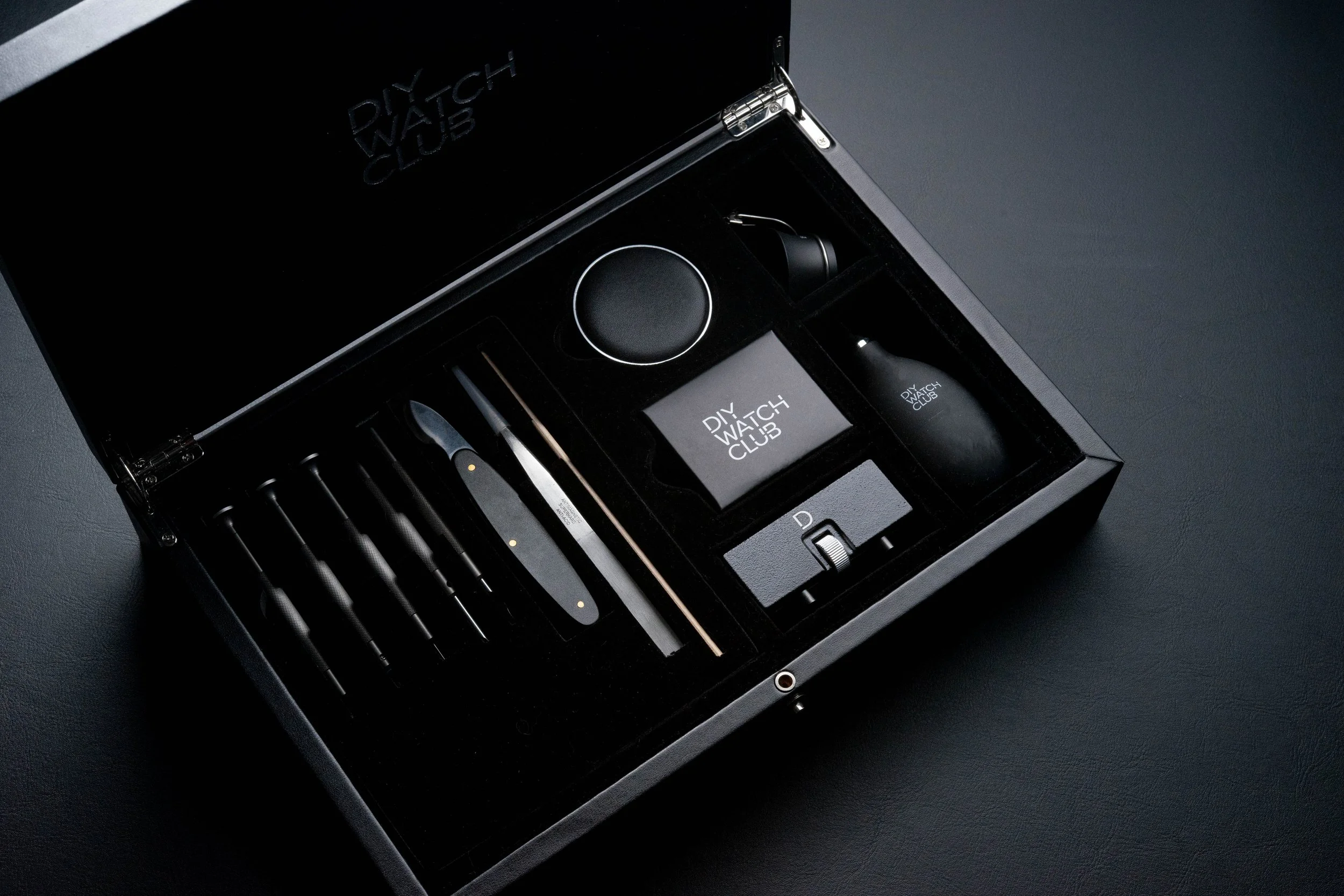Most Recognizable Dive Watches
How the dive watch craze started and shaped the history of wristwatch
Co-CEO of Blancpain Jean-Jacques Fiechter, who was one of the early pioneers of scuba diving, a leisure sport.
When it comes to dive watches, many would first think of Rolex. Indeed Rolex is that brand with many “firsts”, not to mention the fact that it’s without doubt the most well-known watch brand in the world, whether we are talking about dive watches or not.
But the history of the dive watch is more than just Rolex. From the first waterproof watch in Rolex Oyster, we have seen the birth of many iconic dive watches, each bringing something innovative and historically important to the genre. In this article we will go through the handful of most iconic dive watches, and talk about what makes them important.
Sean Connery sporting the iconic Dr. No Rolex from his debut as James Bond. (GQ)
Rolex Submariner: the global icon
Let’s get this out of the way. It is simply impossible to talk about dive watches without mentioning Rolex. Indeed the brand has seen many crowning achievements since its inception, starting with the first ever waterproof watch in the Rolex Oyster. The first Submariner (or Oyster Perpetual Submariner as it was originally named), launched in 1953, took it a step further and was among the first commercially available dive watches that was capable of reaching a depth of 100 meters, or 330 feet.
This technological feat is nothing short of amazing, but the single most important driver to its stunning popularity is its becoming the “James Bond watch” from 1962. Sean Connery was the first Bond to wear the iconic watch, in Dr. No and 3 subsequent Bond films. Subsequently, on Roger Moore’s wrist the Submariner entered the secret agent’s dazzling arsenal of special gadgets, equipped with a circular saw that eventually saved his life in Live and Let Die.
Since its birth, the Submariner has seen many updates and iterations, including the classic ref. 5513. Even though the original technological achievement has long been superseded by the likes of Deep Sea Dweller, thanks to its appearance on the silver screen, the Rolex Submariner is still arguably the most famous watch that has ever existed.
2. Blancpain Fifty Fathoms: the blueprint dive watch.
As you may discover soon, the history of dive watches is basically a history of who can lay claim to the many of the “firsts”. While many would consider the Rolex Submariner as the first diver watch ever, there is a legitimate contender for that claim: The Blancpain Fifty Fathoms, released in 1953, the same year when Submariner came out. One could even argue that Fifty Fathoms is THE original dive watch, as it debuted many innovations before the Submariner.
This is all made possible by the then Co-CEO of Blancpain Jean-Jacques Fiechter, who was one of the early pioneers of scuba diving, a leisure sport then in its naissance. As a passionate diver, Fiechter was troubled by the lack of a proper diving watch, which was deemed too niche a market by watch companies to invest time and money into. He took on the task himself and engineered many features that would become the staple of many dive watches to come, including case back and crown gasket, rotating bezel that can only be turned when pressed down, and legible and luminous markers.
The Blancpain Fifthy Fathoms with a nato strap. (Haute Time)
While the Submariner worked its way to prominence largely through mass media, the Fifty Fathoms found its success through a more utility path. Around the same time Fiechter designed the original Fifty Fathoms, French Captain Robert Maloubier and Lieutenant Claude Riffaud were tasked by the French navy to search for scuba gear for the newly established diving corps. They went to different companies, with the likes of LIP, for a specially built watch that could handle the various special needs of the corps. Many refused due to the niche market, and those prototypes that were eventually made failed miserably. Eventually the Frenchmen got into contact with Fiechter, and it was a match made in heaven. Fiechter’s Fifty Fathoms passed the French navy’s test with flying colors. The only change requested by the French navy was to add anti-magnetic capability to the watch, and that was easily incorporated by Blancpain by including a soft iron cage.
And in this way the Blancpain Fifty Fathoms became a prominent player in the dive watch market with its first public release in 1953. Subsequently many navies followed in the footsteps of the French navy, including Israeli’s and then the American, Spanish, German etc. Some of them requested new features, such as the Americans’ humidity indicator, and these factors introduced many different iterations of the original dive watch.
3. Panerai Radiomir: the first lumed dive watch.
At the turn of the century in the 1900s, Guido Panerai, the grandson of Giovanni Panerai, pushed for a new vision to expand the family’s business of a watch shop and repair workshop. Guido Panerai invented gun sights that were illuminated by mixing radium and zinc sulfide together which he would later use in the Radiomir. This was so unique at the time, it caught the attention of the Royal Italian Navy. Soon after, Panerai became the official supplier for a variety of technical and precision equipment including dive instruments for the Italian Navy. Soon the Italian Navy requested from Guido reliable tools that could measure time underwater for extended periods of time during covert missions at night. For this purpose, Guido went back to his drawing board.
Panerai’s borrowed design for the Radiomir from the Rolex ref. 2533. (Jake’s Rolex Magazine)
Panerai already had the lume technology to fulfill the need for night time legibility. The only thing left is a robust movement and a waterproof case. For that, Panerai looked to Rolex in 1935. Panerai took inspiration from the Rolex ref. 2533’s characteristics of a cushion shaped case, welded wire lugs, and onion crown. With Guido’s experience, he then used the same radium based paint from the illuminated gun sights for the watch indices. The chemical itself does not glow in the dark, but its radiation excites the electrons in a phosphorescent material like zinc sulfide which emits light. A year later, the Panerai Radiomir was born, it got its name from the self-luminous chemical named, Radium.
The Radiomir was used extensively by frogmen who would carry out covert missions by manning a maiale, an Italian manned torpedo to their designated targets at night during World War II. As the war went on, so did the designs of Panerai. The zinc used on their dials would degrade over time which affected the legibility of their watch. Panerai turned to Tritium, a safer alternative to Radium, for their next watch, the Panerai Luminor.
4. Omega Seamaster: the other Bond watch
Town. Sea. Country. This was Omega’s tagline when they released the Omega Seamaster in 1948. The Omega Seamaster is one of, if not the longest running model in Omega’s collection to date.
Poster of the original Seamaster
Purists say you can’t mention the Seamaster without referencing the watch that took inspiration from the Omega Marine, ref 679, from 1932. Being the first watch that was specifically tested and approved for diving at significant depths - 135m, Omega came up with a guaranteed solution for its watch to be airtight in the event of plunging deep into the ocean. The watch came with an outer case that would create a seal which would become tighter as external pressure increases. Though this exact design did not make it to the later Seamaster, it did become a blueprint for later waterproof watches to be made.
Now back to the Seamaster. First released in 1948, it was meant as a celebration of the 100th anniversary of the company. Originally designed as a gentlemen’s everyday watch in order to stand up to the rigors of daily life, people at the time named it, “the people’s watch”, and hence the tagline, Town. Sea. Country. The Seamaster became revolutionary at the time because of its innovative way of using a rubber gasket for water resistance that was sensitive to temperature and depth changes - the same technology used in submarines to this day. Omega was so confident with their design they even attached the Seamaster to the outside of a Douglas DC-6, a cargo aircraft that flew the Polar Route over the North Atlantic.
Pierce Brosnan and the Omega Seamasters he wore in the Bond films. (Swiss Watches Magazine)
In 2020, Omega celebrated its partnership with 007 for 25 years. This first started in 1995 when Pierce Brosnan took on the challenge to play James Bond in the next instalment of the Bond films, GoldenEye. Lindy Hemming, an Oscar-winning costume designer, was convinced that Bond, a naval man, a diver and a discreet gentleman of the world would wear a Seamaster. Thus beginning the long partnership between 007 and Omega. The rest, as they say, is history.
Surfacing an underwater history
These four dive watches mentioned are recognizable and unique in its own way. What they all share in common is that they were built for specific reasons: to tell time underwater. And they all blazed a trail doing so. Without them, we wouldn’t have the myriads of dive watches that came after them. Tried and tested to withstand brutal conditions, approved by the Navy, even making movie appearances, these four rightfully secures themselves to the most recognizable dive watches of all time.
















Blued hands and screws are ubiquitous existences in the history of watchmaking. Behind that frequent appearance though is a history and science that go beyond the aesthetic value of flame bluing.